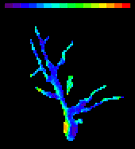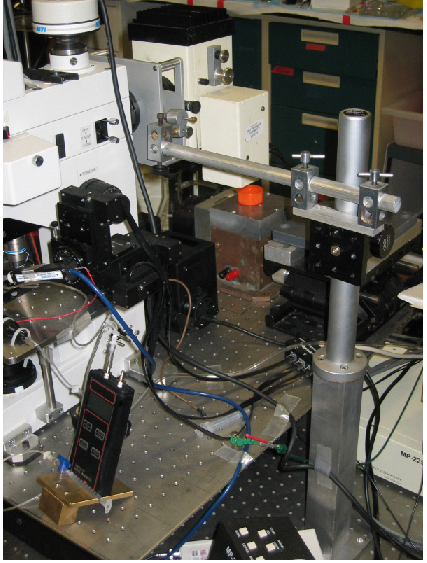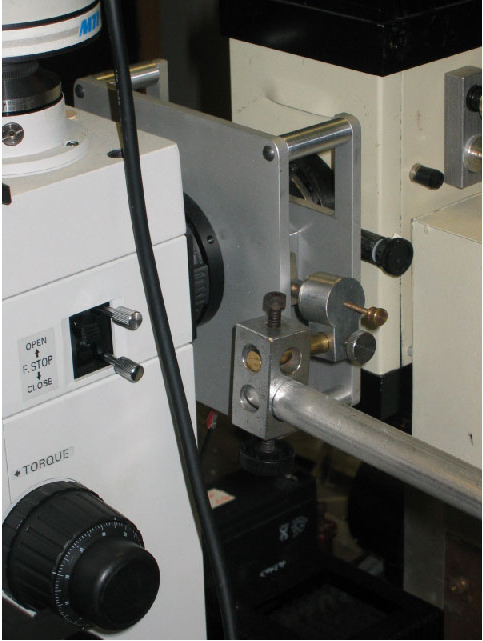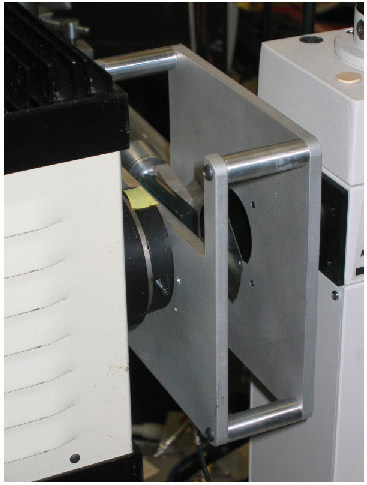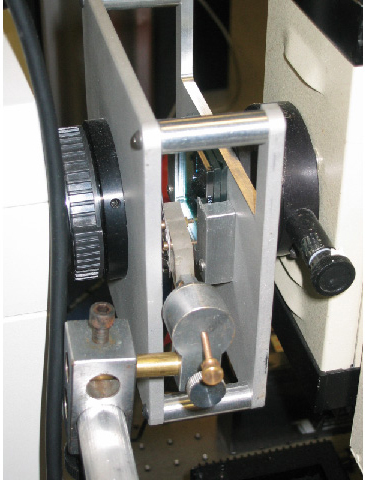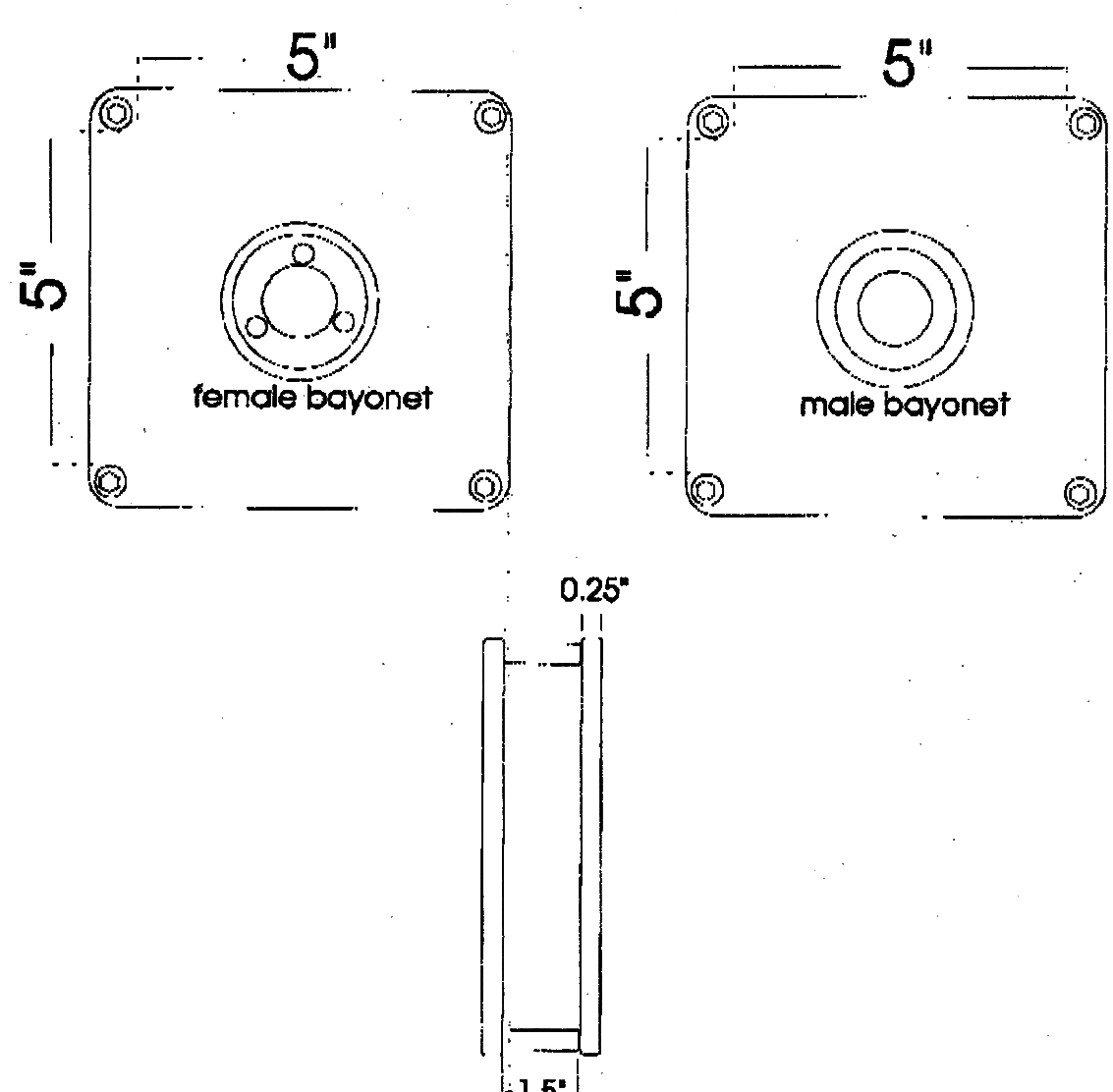|
Shutter |
All
content |
Need for a Shutter In addition to reducing bleaching and photo
toxicity, using a shutter will reduce or eliminate a DC drift
one sometimes sees at the beginning of the recording. This DC drift is
usually caused by the fact that in order to synchronize the electrical
(BNC) recording with the camera, NeuroPlex
switches the camera from the free running mode to trigger mode shortly
before the acquisition. The trigger mode allows the camera to be
triggered frame-by-frame by the clock signals that control the BNC
recording. Once the camera is switched to the trigger mode, it will not
read out or empty the photons in the CCD until the trigger pulses
arrive. If the shutter is not implemented and controlled by NeuroPlex and is open before the acquisition
starts, photons will accumulate in the CCD and it will take many
read-outs to completely empty the charges and reach a stable level.
This is why a DC drift can be seen. Using
a shutter controlled by NeuroPlex
will avoid such photon/charge accumulation and thus this initial
DC-drift. Shutter installation If the shutter is directly attached to the
microscope, its opening is likely to cause a damped vibrational noise
that lasts for about a second. This effect can be reduced by mounting
the shutter independently of the microscope. The images below illustrate a mechanism for
isolating the shutter from the microscope. This reduces vibrational
noise which results from shutter opening. (Click on each image to
magnify).
|
|||||||||||||||||||||||||||||||||||||||||||||||||||||||||||||||||||||||||||||||||||||||||||||||||||||||||||||||||||||||||||||||||||||||||||||||||||||||||||||||||||||||||||||||||||||||||||||||||||||||||||||||||||||||||||||||||||||||||||||||||||||||||||||||||||||||||||

